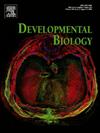绒毛膜尿囊膜(CAM)模型:从发育生物学起源到在癌症研究中的作用。
IF 2.5
3区 生物学
Q2 DEVELOPMENTAL BIOLOGY
引用次数: 0
摘要
在过去的一个世纪里,鸡胚胎模型,历史上用于发育生物学的研究,已经成为癌症研究的一个有价值的工具。鸡毛囊尿囊膜(chorioallantoic membrane, CAM)的特性使其成为研究癌症的便捷模型,从而建立了替代传统体内癌症模型的CAM实验。在这篇综述中,我们将探讨CAM的特点,使其适合于癌症研究,以及它作为一个多功能平台在这一领域的巩固。我们将特别强调描述使该模型成为研究癌症特征和测试各种治疗策略的重要资产的关键特征,并使其成为患者来源的异种移植物(PDX)的合适宿主。此外,我们将研究广泛的方法方法,可用于研究这些主题,突出一些创新的案例。最后,我们将讨论小鸡CAM作为癌症研究模型的优点和缺点,以及我们如何改进该模型以充分发挥其潜力。本文章由计算机程序翻译,如有差异,请以英文原文为准。
The chorioallantoic membrane (CAM) model: From its origins in developmental biology to its role in cancer research
Over the past century, the chick embryo model, historically employed for research in developmental biology, has become a valuable tool for cancer research. The characteristics of the chick chorioallantoic membrane (CAM) make it a convenient model for the study of cancer, leading to the establishment of the CAM assay as an alternative to traditional in vivo cancer models. In this review we will explore the characteristics of the CAM that make it suitable for cancer research, as well as its consolidation as a versatile platform in this field. We will put particular emphasis on describing the key features that make this model an important asset for studying the hallmarks of cancer and for testing a wide variety of therapeutic strategies for its treatment, and which make it a suitable host for patient-derived xenografts (PDX). Additionally, we will examine the wide spectrum of methodological approaches available to study these subjects, highlighting some innovative cases. Finally, we will discuss the advantages and disadvantages of the chick CAM as a model for cancer research and how we can improve this model to its full potential.
求助全文
通过发布文献求助,成功后即可免费获取论文全文。
去求助
来源期刊

Developmental biology
生物-发育生物学
CiteScore
5.30
自引率
3.70%
发文量
182
审稿时长
1.5 months
期刊介绍:
Developmental Biology (DB) publishes original research on mechanisms of development, differentiation, and growth in animals and plants at the molecular, cellular, genetic and evolutionary levels. Areas of particular emphasis include transcriptional control mechanisms, embryonic patterning, cell-cell interactions, growth factors and signal transduction, and regulatory hierarchies in developing plants and animals.
 求助内容:
求助内容: 应助结果提醒方式:
应助结果提醒方式:


